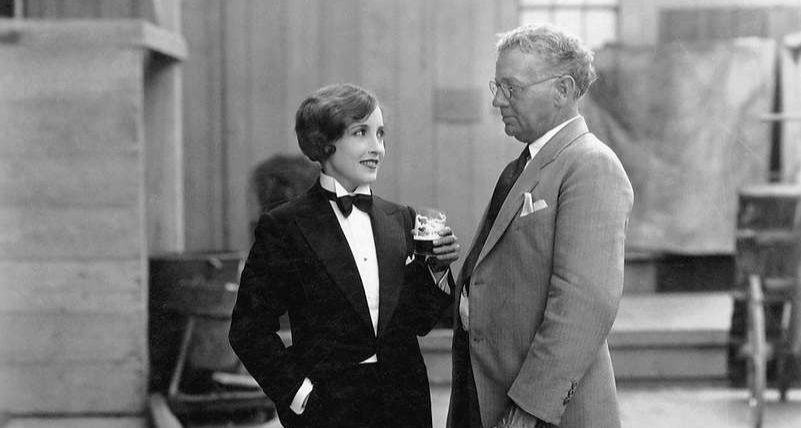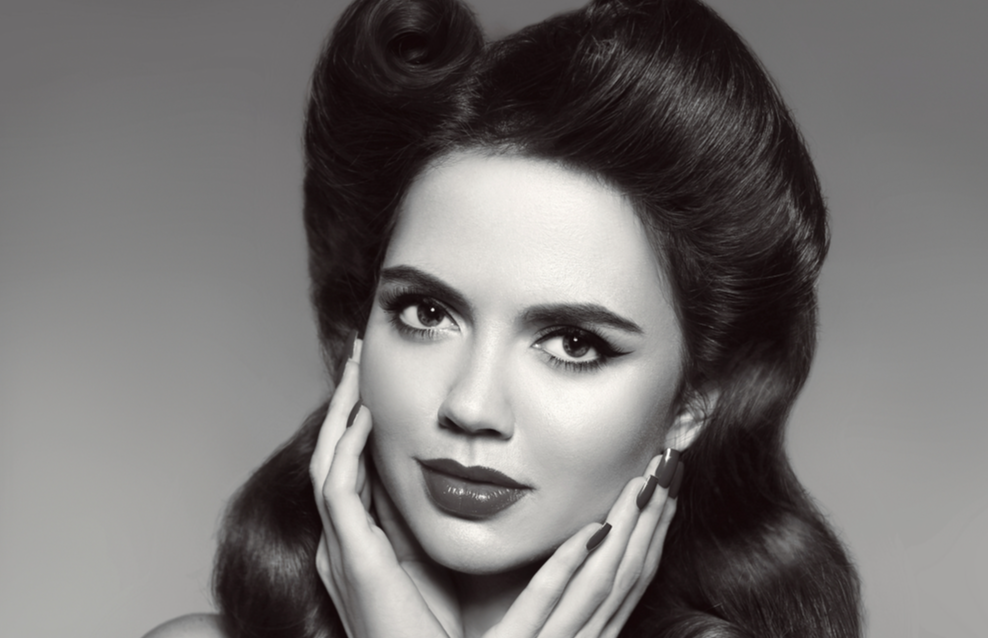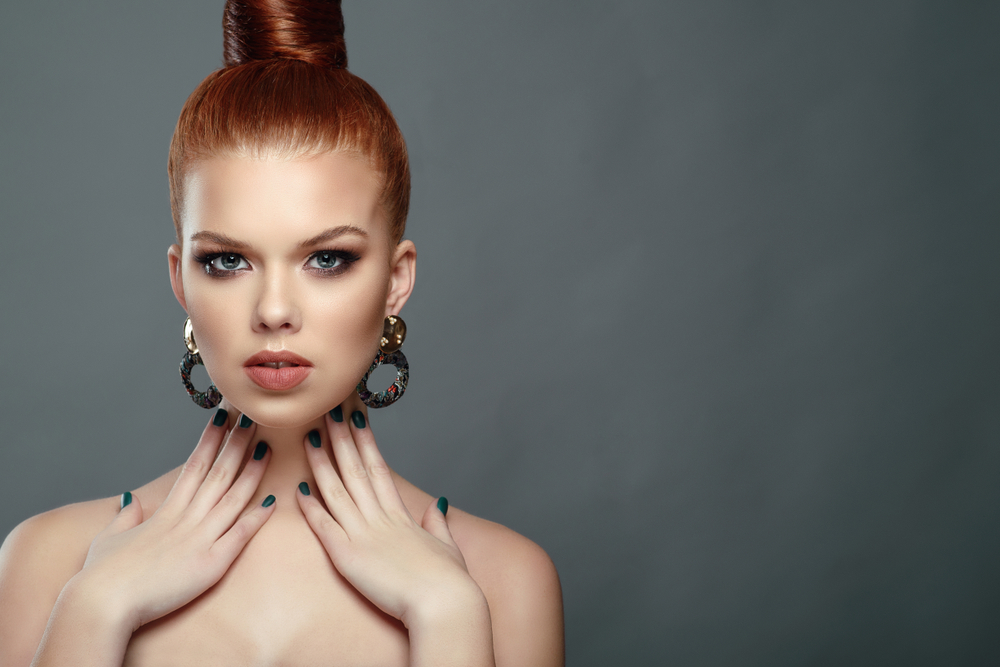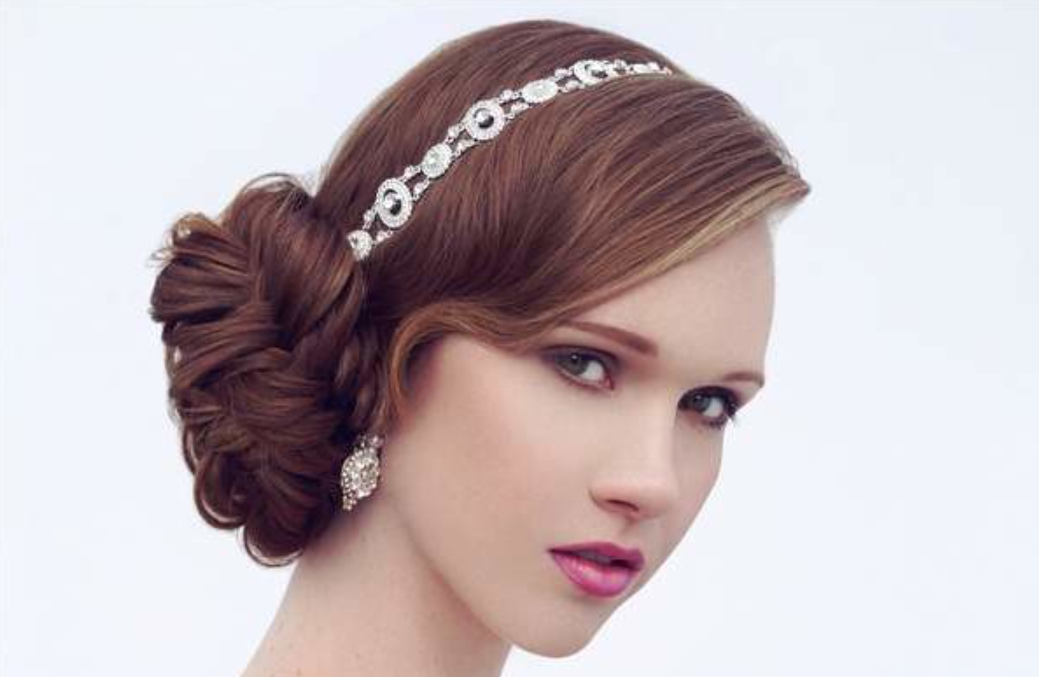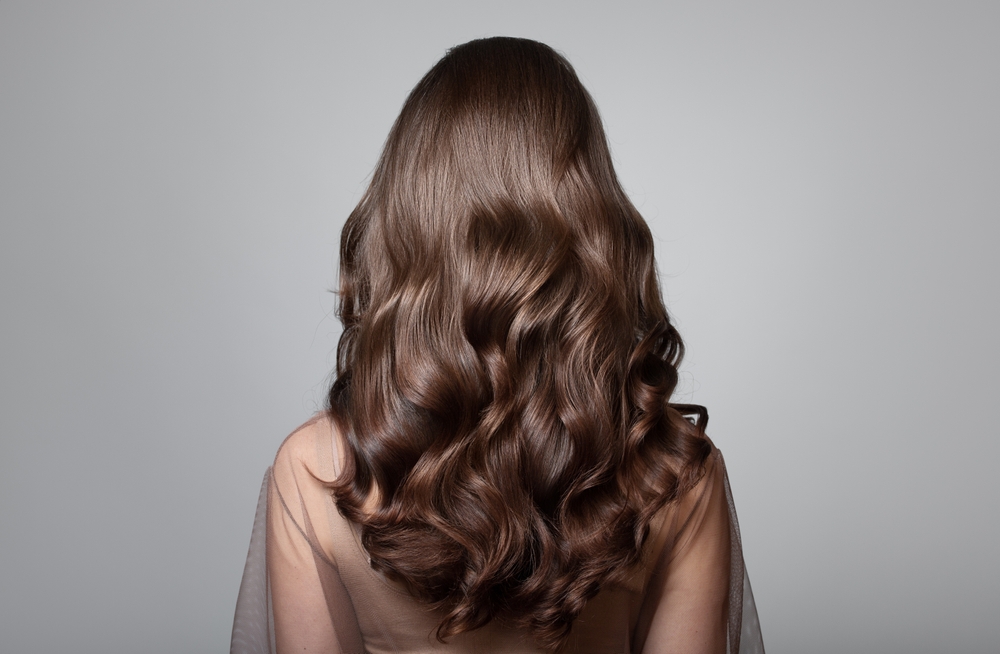Voltaire... Hair.
Called a woman’s “crowning glory”, our hair is a symbol of beauty. It’s not surprising, then, that hairstyle trends usually start with celebrities—the people who often set beauty standards. From Mary Pickford’s curls and Marilyn Monroe’s platinum blonde locks to Farrah Fawcett’s bouncy waves and Billie Eilish’s neon green hair, women have been emulating the best celebrity hairstyles for the last century.
Mary Pickford curls
Mary Pickford’s curly hairstyle was her trademark, earning her the nickname, “The Girl with the Curls”. Even as women embraced sleek, short styles in the 1920s, Pickford kept her long, golden curls. The actress—and the women who emulated her—styled her curls without heat, wrapping her hair in leather curling rags when it was almost dry.
Browbands
Browbands are a hallmark of 1920s flapper hairstyles. These thin pieces of fabric, worn around the forehead, were often embellished with sequins, crystals, or feathers.
Bangs
People have cut their bangs since ancient Egyptian times. However, bangs soared in popularity during the 1920s—and have continued to be part of popular hairstyles since. Appearing as part of the blunt bob styles of the 1920s, bangs have been trendy in virtually every decade since. Veronica Lake’s peekaboo bangs in the 1940s, Betty Paige’s pinup bangs in the 1950s, and the feathered bangs of the 1980s are all styles that have been widely adopted.
The Bob
The classic bob cut was introduced to the United States by Irene Castle, a ballroom dancer who appeared on Broadway and in the movies between the 1910s and ‘30s. Popularized in the 1920s by flappers, variations of the bob have trended in virtually every decade since. The classic blunt bob is cut at the same length around the head, usually at jaw level and may or may not include bangs.
Red hair
When movie star Clara Bow dyed her hair red in the late 1920s, henna sales skyrocketed. Seen as fiery and exciting, red hair color is a frequently recurring trend.
Eton crop
One of the most popular hairstyles of the 1920s was the Eton Crop—a short, slicked-back style inspired by boys’ haircuts. Some women, including Josephine Baker, added a “kiss curl”—a lock of hair plastered flat to the forehead—to add a touch of femininity to the look.
Finger waves
First made popular in the 1920s, finger waves recently made a comeback, with Zendaya, Rihanna, and Beyoncé all rocking the retro look. Although finger waves can be created more easily today with modern styling tools, women in the 1920s fashioned the “s” shaped waves with their fingers and combs.
Shingle cut
A variation of the bob, the shingle cut is quite short, exposing the hairline at the back of the neck and gradually getting longer towards the face. The extreme shortness of this style was considered more daring and controversial than a classic blunt bob.
 J. Willis Sayre Collection of Theatrical Photographs, Picryl
J. Willis Sayre Collection of Theatrical Photographs, Picryl

History's most fascinating stories and darkest secrets, delivered to your inbox daily.
Marcel waves
Both Marcel waves and finger waves are tight waves close to the head. The difference between the two is in how they are created. Marcel waves are made with “hot tongs” (which evolved into the present-day curling iron) while finger waves are made with fingers and combs only. Both methods became popular in the 1920s to soften women’s angular bobs.
 Louis Calvete, CC BY-SA 3.0, Wikimedia Commons
Louis Calvete, CC BY-SA 3.0, Wikimedia Commons
Pin curls
From the 1920s to the 1950s, pin curls were popular for curling hair without heat. Rolled into a spiral shape from ends to roots, and then pinned into place to dry, pin curls could be left tightly coiled as part of a glam hairdo or brushed out and styled into soft waves.
Updos with flowers
Billie Holiday started the 1940s trend of using flowers as hair accessories. At the beginning of her career, Holiday accidentally burned off a section of her hair with a curling iron just before a show. To cover the mishap, Holiday bought gardenias from a coat check girl and pinned them into her hair. The flowers became Holiday’s trademark accessory and other women embraced the look, loving the femininity and glamour that the flowers added.
Half up, half down
Classic, elegant, and easy, the half up half down hairstyle was first popularized by Vivien Leigh in her role as Scarlett O’Hara in Gone with the Wind. It’s created by sweeping the top section of hair into a ponytail or bun, while the bottom section falls loosely. This classic look has never really gone out of style and is currently favoured by Catherine, The Princess of Wales.
Snoods
Snoods have been used as hair coverings since the Middle Ages. They surged in popularity during World War II, when women wore them to protect their hair while working in factories. Most snoods in the 1940s were knit or crocheted but some were fashioned from headscarves.
Victory rolls
Lana Turner first used the term “victory hair” to refer to the striking curled hairstyles created for her on the set of Somewhere I’ll Find You. Other actresses and the general public soon followed suit, creating large tubular rolls on the tops of their heads. The style has become synonymous with retro pinup looks.
Brushed out and loose Curls
Brushed out and loose curls have been a classic look throughout the decades. The soft, feminine style was particularly prevalent in the 1950s. However, loose curls were also embraced by Lauren Hutton in the 1970s and Julia Roberts in the 1990s—and all the women who adopted the same look.
The Chignon
Women have been securing their hair in chignons for hundreds of years. However, this elegant hairstyle—often worn for special events—was popularized by Grace Kelly in the 1950s. Although similar to a bun, a chignon is a specific style, placed low on the nape of the neck and kept sleek with the hair tucked under.
Bleached blonde
Bleached blonde hairstyles became iconic in the 1950s, embraced by stars such as Marilyn Monroe, Jayne Mansfield, and Lana Turner. The high-maintenance style, which requires frequent bleaching, has remained a favourite of celebrities. Debbie Harry, Madonna, Courtney Love, Gwen Stefani, and Charlize Theron are just a few who have sported the look since the 1950s.
 Olga Ekaterincheva, Shutterstock
Olga Ekaterincheva, Shutterstock
Pixie cut
Audrey Hepburn famously lopped off her long brunette locks in a scene during Roman Holiday. Her endearing pixie cut was embraced by women everywhere not just as a hairstyle but as an act of rebellion. Pixie cuts have since been a recurring trend, worn by Winona Ryder in the 1990s and Halle Berry and Rihanna in the 2000s.
Ponytail
When Brigitte Bardot starred in And God Created Woman in 1956, the world was introduced to the French actress—and her iconic hairstyles. Bardot is responsible for popularizing the ponytail, often pairing it with a back-combed crown.
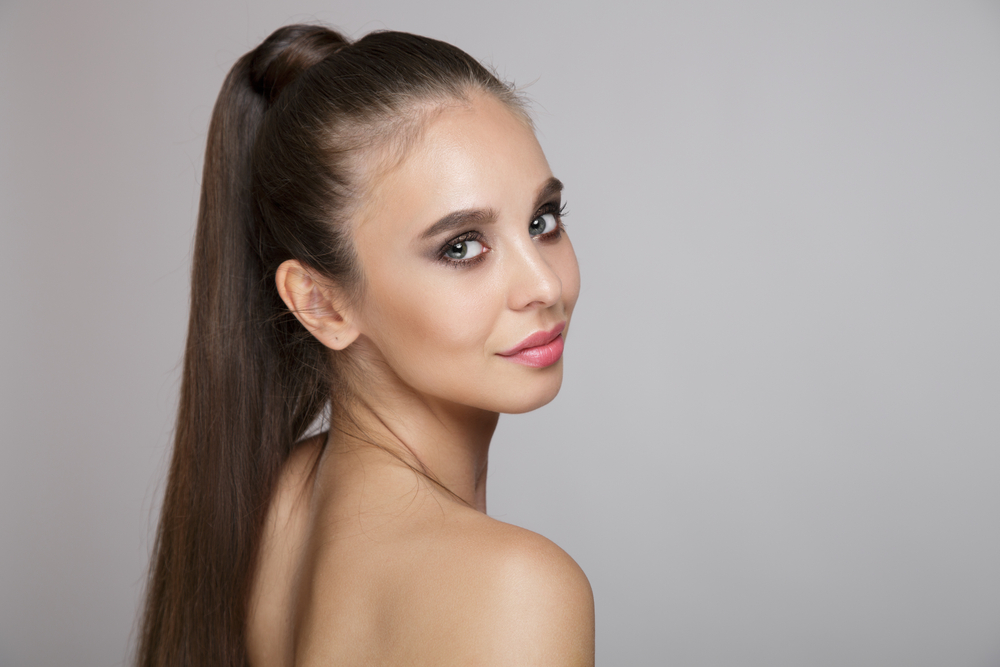 Kourdakova Alena, Shutterstock
Kourdakova Alena, Shutterstock
French pleat
Audrey Hepburn started several hairstyle trends—including the French pleat. Popularized in Breakfast at Tiffany’s, this elegant, classic style remains a favourite bridal look.
Flipped hair
In 1959, a teenaged Sophia Loren famously posed for a headshot that featured her sleek, glossy, shoulder-length hair flipped at the ends with curls. The look was a completely new silhouette that quickly became one of the hottest hairstyle trends of the early 1960s.
 Felix Rivera MEX, Wikimedia Commons
Felix Rivera MEX, Wikimedia Commons
The Bouffant
The 1960s ushered in an era of hairstyles that incorporated height including the stacked updo, the beehive, and the bouffant. Popularized by Jackie Kennedy, a bouffant is created by back-combing the crown and smoothing the top layer to create a neat finish.
The Beehive
Perhaps the most iconic look of the 1960s, the beehive was embraced by the decade’s biggest style icons including Audrey Hepburn, Brigitte Bardot, Aretha Franklin, and The Supremes. While the look is identified with the 1960s, it has been worn more recently by Amy Winehouse, Beyoncé, Adele, and even Marge Simpson.
Long and straight
The long, straight hairstyles embraced by hippies in the 1960s have become iconic. Celebrities such as Cher and Ali MacGraw popularized the look. The sleek style could be adapted to various face shapes by adding bangs or a center part.
 Kourdakova Alena, Shutterstock
Kourdakova Alena, Shutterstock
The Shag
Jane Fonda was the first person to sport a shag cut after being styled by Paul McGregor for her 1971 film, Klute. Embraced by both men and women, the shag is created by layering and feathering to achieve wispy ends and a messy look. The shag was further popularized by style icons Joan Jett and Stevie Nicks.
The Afro
The voluminous afro is one of the 1970s’ most iconic hairstyles. The civil rights movements of the 1960s encouraged Black people to stop conforming to European beauty standards and instead embrace their natural beauty. The afro was not just a hairstyle but an expression of Black pride and empowerment.
Cornrows
Cornrows originated in Africa and were worn for centuries. The tightly braided style had a resurgence in the 1970s thanks to Cicely Tyson who sported them for her role in Sounder. In the 2000s, several NBA players embraced the style.
Wedge Haircut
Figure skater Dorothy Hamill got her hair cut on the way to the 1976 Winter Olympics. Her new wedge style—dubbed the “Dorothy Hamill cut”—quickly became iconic. Created by layering and tapering short hair at the bottom of the cut while leaving the crown long and full of volume, the wedge is characterized by movement.
 Albert Lynch, Wikimedia Commons
Albert Lynch, Wikimedia Commons
Farrah waves
When Farrah Fawcett posed for her famous swimsuit poster in 1976, her hairstyle became an instant trend. Fawcett’s long highlighted hair was layered and feathered, creating bouncy unkempt waves that reflected the 1970s’ emphasis on natural beauty.
Spiky punk hair
Siouxsie Sioux, nicknamed the “Godmother of Goth” was part of the beginnings of punk rock and one of the originators of goth in the 1970s. She carefully created her look, including her short black spiky hairstyle.
Top knots
The simple topknot became trendy in the early 1980s. While it was introduced as a glamorous hairstyle, it has evolved over the years into the messy top knots that are still popular today.
Asymmetrical updo
Did you even live through the 1980s if you never swept your hair into an asymmetrical updo?
Crimped hair
Crimping allowed girls and women with straight hair to achieve the big hairstyles of the 1980s. Crimping mimicked the wavy texture of freshly unbraided hair but rather than braiding and unbraiding their hair to achieve the look, most women used crimping irons.
 More Than Production, Shutterstock
More Than Production, Shutterstock
Box braids
Box braids have been around for thousands of years but they became trendy after Janet Jackson wore them in 1993’s Poetic Justice. Medium box braids—created from square-shaped hair divisions and about the width of a pencil—are worn loose and can be styled in different ways.
Blowouts
The technique of using a hairdryer and a brush to achieve a straight, wavy, or curly style—without any other tools—was developed in the 1960s. In the 1990s, blowouts were typically done to create bouncy, polished waves. As more natural styles were embraced in the 2000s, blowouts fell out of favor. However, they resurfaced in the early 2010s and are trending again in the mid-2020s.
Surfer girl curls
Beachy, textured waves and sunkissed highlights became trendy in the early aughts, thanks to Mischa Barton’s look in The O.C.
Ombré
The ombré hair coloring technique became trendy in the 2010s. Ombré is a French word that means a series or pattern of colors that shade into each other. When it comes to hair, an ombré style is usually darker at the roots and then starts lightening at mid-shaft.
Lob
In the 2010s, the lob emerged, combining the best of two worlds: sleek blunt bob styling on longer hair (usually between chin and collarbone length). The word “lob” is derived from “long bob.”
Bold neon
Bold unnatural hair colors like blue, green, and pink first surfaced in the 1970s among punk rockers as a form of rebellion. Bright, bold hair color increasingly became popular over time, embraced by celebrities like Cyndi Lauper in the 1980s and Dennis Rodman in the 1990s. The pandemic lockdowns of the 2020s provided time away from societal pressures to experiment with hair dye and many chose to try out unnatural colors.
 Roman Samborskyi, Shutterstock
Roman Samborskyi, Shutterstock
The Rachel
The Rachel, of course, is the hairstyle made famous by Jennifer Aniston in Friends. The layered, voluminous style was created by her hairstylist, Chris McMillan, who she claims was under the influence while he was cutting her hair. The haircut quickly gained popularity and became a cultural phenomenon, with many women requesting the same style in salons.
 Featureflash Photo Agency, Shutterstock
Featureflash Photo Agency, Shutterstock







